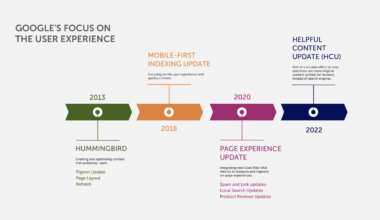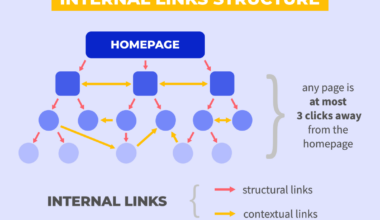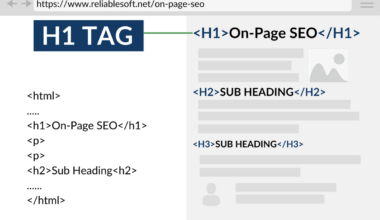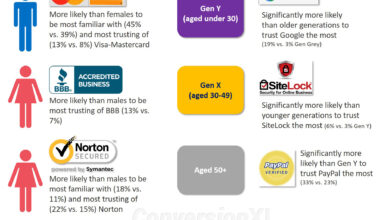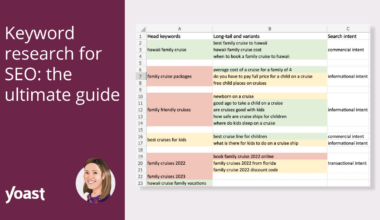Introduction: Importance of SEO for Multilingual Websites
As businesses expand their reach to a global audience, it becomes essential to have a website that caters to different languages. A multilingual website can help to break down language barriers and increase user engagement, but it also presents unique challenges for search engine optimization (SEO).
SEO is the process of optimizing your website to rank higher in search engine results pages (SERPs) for targeted keywords. For multilingual websites, SEO becomes more complex as you need to consider language and regional targeting, content localization, and URL structures.
Ignoring SEO for your multilingual website can lead to poor visibility in search engines, resulting in lower traffic and conversions. Thus, it’s essential to understand and implement multilingual SEO best practices to ensure your website’s success.
In this article, we’ll explore various aspects of SEO for multilingual websites, including keyword research, hreflang tags, content localization, URL structures, and site navigation. We’ll also discuss the importance of continuous optimization and monitoring for multilingual SEO success. By the end of this article, you’ll have a comprehensive understanding of how to optimize your multilingual website for search engines.
Multilingual Keyword Research
Keyword research is the foundation of any SEO strategy, and it’s no different for multilingual websites. However, when conducting keyword research for a multilingual website, it’s crucial to consider language differences and regional variations.
Here are some essential steps to follow when conducting multilingual keyword research:
1. Identify target languages: Determine which languages you want to target and which countries or regions speak those languages. Consider the differences in language dialects and variations in vocabulary.
2. Translate seed keywords: Use translation tools or hire professional translators to translate your seed keywords into your target languages. Ensure the translations are accurate and reflect the nuances of the language.
3. Use keyword research tools: Use keyword research tools such as Google Keyword Planner, Ahrefs, SEMrush, or Moz to identify the search volume and competition level of your translated keywords.
4. Analyze search intent: Understand the search intent behind keywords in each language. People may use different keywords to search for the same thing in different languages, so it’s crucial to understand the intent behind each keyword.
5. Prioritize local keywords: Consider using local keywords that are specific to each region or country’s culture and customs. This will help your content resonate more with the local audience.
6. Optimize for long-tail keywords: Long-tail keywords are more specific and less competitive than short-tail keywords. They are easier to rank for and can help drive targeted traffic to your website.
Once you’ve completed your multilingual keyword research, you can use the data to optimize your content and metadata for each language and region. By using relevant keywords in your content, you can improve your website’s visibility in search engines and drive targeted traffic to your website.
In conclusion, multilingual keyword research is an essential component of any multilingual SEO strategy. By understanding the nuances of each language and conducting thorough research, you can optimize your website for search engines and increase your visibility to a global audience.
Implementing Hreflang Tags for Language and Regional Targeting
Hreflang tags are HTML tags that help search engines understand which language and region a specific page is intended for. Implementing hreflang tags is crucial for multilingual websites as it helps search engines serve the correct language and regional version of your website to the user.
Here are some essential steps to follow when implementing hreflang tags:
1. Determine your target languages and regions: Similar to multilingual keyword research, you must identify which languages and regions you want to target. This will help you determine which pages need hreflang tags.
2. Choose your hreflang tag format: There are two formats for hreflang tags: language-only and language-region. Language-only tags indicate the language of the page, while language-region tags indicate the language and region. Choose the format that best suits your website’s needs.
3. Add hreflang tags to your website: Once you’ve chosen your hreflang tag format, you can add the tags to your website’s HTML code. You can add the tags to the page’s head section or to the HTTP header of the page.
4. Verify your hreflang tags: After adding hreflang tags to your website, it’s important to verify that they’re working correctly. You can use tools such as Google Search Console or hreflang Checker to verify your tags.
Here’s an example of how to implement hreflang tags for a multilingual website:
Let’s say you have a website with three language versions: English (en-US), Spanish (es-ES), and French (fr-FR). You want to target users in the United States, Spain, and France.
To implement hreflang tags, you would add the following HTML code to the head section of your pages:
English version:Spanish version:French version:By adding hreflang tags to your website, you can ensure that search engines serve the correct language and regional version of your website to the user. This can improve your website’s visibility in search engines and drive targeted traffic to your website.
In conclusion, implementing hreflang tags is crucial for multilingual websites. By following the steps outlined above, you can ensure that your website is properly optimized for language and regional targeting.
Content Localization and Translation for SEO
Content localization and translation are critical components of multilingual SEO. Localizing content means adapting it to fit the language, culture, and customs of the target audience. It involves more than just translating words; it requires understanding the context and adapting the content to suit the local audience’s preferences.
Here are some essential steps to follow when localizing content for multilingual SEO:
1. Hire professional translators: Professional translators can help ensure that your content is accurately translated and localized for the target audience. They can also help you adapt your content to suit the local audience’s preferences and customs.
2. Consider cultural differences: When localizing content, it’s crucial to consider cultural differences. For example, certain words or phrases may have different meanings or connotations in different cultures, so it’s important to ensure that your content is culturally appropriate.
3. Use localized keywords: Use the localized keywords you identified during your multilingual keyword research in your content. This will help your content rank higher in search engine results pages (SERPs) for the target language and region.
4. Optimize metadata for each language: Each language and region should have its own metadata, including title tags, meta descriptions, and alt tags. This will help search engines understand which language and region each page is intended for.
5. Create unique content for each language: Creating unique content for each language and region can help improve your website’s visibility in search engines. This can be challenging, but it’s crucial for multilingual SEO success.
6. Use language-specific URLs: Consider using language-specific URLs for each language and region. This will help search engines understand which language and region each page is intended for.
By localizing your content, you can improve the user experience for your target audience, increase engagement, and improve your website’s visibility in search engines.
In conclusion, content localization and translation are critical for multilingual SEO success. By following the steps outlined above, you can ensure that your content is accurately translated and localized for your target audience. This can help improve your website’s visibility in search engines and drive targeted traffic to your website.
URL Structures and Site Navigation for Multilingual Websites
URL structures and site navigation are crucial for multilingual websites as they help search engines and users understand the different language versions of your website. A well-structured URL and site navigation can also improve the user experience and help users find the content they’re looking for quickly.
Here are some essential steps to follow when creating URL structures and site navigation for multilingual websites:
1. Choose your URL structure: There are two main approaches to URL structures for multilingual websites: subdomains (e.g., en.example.com, es.example.com) or subdirectories (e.g., example.com/en/, example.com/es/). Both approaches have their pros and cons, so choose the one that best suits your website’s needs.
2. Use language-specific URLs: Each language and region should have its own language-specific URLs. This helps search engines understand which language and region each page is intended for.
3. Implement language switcher: A language switcher is a tool that allows users to switch between different language versions of your website. A language switcher should be prominently displayed on your website and should be easy to use.
4. Use language-specific navigation: Each language and region should have its own language-specific navigation. This can help users find the content they’re looking for quickly and improve the user experience.
5. Ensure consistency: Ensure that the same content is available on each language version of your website and that the content is consistent across all language versions. This can help improve the user experience and ensure that your website is properly optimized for search engines.
Here’s an example of how to structure URLs for a multilingual website using subdirectories:
English version:
example.com/en/
Spanish version:
example.com/es/
French version:
example.com/fr/
By following the steps outlined above, you can create a well-structured URL and site navigation for your multilingual website. This can help improve the user experience, ensure that your website is properly optimized for search engines, and drive targeted traffic to your website.
In conclusion, URL structures and site navigation are crucial for multilingual websites. By following the steps outlined above, you can create a well-structured URL and site navigation that improves the user experience and ensures that your website is properly optimized for search engines.
Final Thought: Continuous Optimization and Monitoring for Multilingual SEO Success
Optimizing your multilingual website for search engines is an ongoing process that requires continuous monitoring and optimization. Here are some essential steps to follow to ensure multilingual SEO success:
1. Analyze your website’s performance: Use tools such as Google Analytics or SEMrush to analyze your website’s performance for each language and region. Identify areas that need improvement and optimize accordingly.
2. Conduct regular keyword research: Conduct regular keyword research to identify new keywords and monitor the performance of existing keywords. This can help you stay ahead of the competition and ensure that your content is optimized for the latest trends.
3. Monitor your website’s technical SEO: Technical SEO issues such as broken links, duplicate content, and slow page load times can negatively impact your website’s performance. Regularly monitor your website’s technical SEO and fix any issues that arise.
4. Keep your content up-to-date: Regularly update your content to keep it fresh and relevant for your target audience. This can help improve engagement and ensure that your website is properly optimized for search engines.
5. Stay up-to-date with industry trends: Stay up-to-date with the latest industry trends and best practices for multilingual SEO. This can help you stay ahead of the competition and ensure that your website is properly optimized for search engines.
By continuously optimizing and monitoring your multilingual website for search engines, you can ensure that your website is properly optimized for each language and region. This can help improve your website’s visibility in search engines and drive targeted traffic to your website.
In conclusion, multilingual SEO requires continuous optimization and monitoring to ensure success. By following the steps outlined above, you can improve your website’s performance and ensure that your website is properly optimized for search engines.












